“When you go home, tell them of us and say,
For your tomorrow, we gave our today”
The Battle of Kohima was a turning point for the British Army during Japanese offensive against them in one of the many theatres of war fought in East Asia. Fought over three stages, between 4 April 1945 to 22 June 1945, the battles on the Kohima ridge, now a bustling city in Nagaland, saw the death of many soldiers in the British Indian Army, including Punjabi’s, Bengalis, Assamese, the odd South Indian and men from other commonwealth countries. One of the fiercest battles was fought on Garrison Hill, the last bastion of hope for the British Indian Army, as the Japanese Imperial Army, with greater determination and apparently a will to die for the Emperor, slowly advance along the Kohima ridge. Garrison Hill thankfully did not fall, held by sheer grit of the 161st Brigade, members from the 5th Indian Division and the 4th Battalion of the West Kents, thus ensuring that the Japanese Imperial Army did not cross into the Dimapur plains and the rest of the country. The message from above, was that if Kohima fell, so would the rest of the country, and the Indians fighting on the side of their colonizers would go from being ruled by the white man to being ruled by a new Emperor from the east.
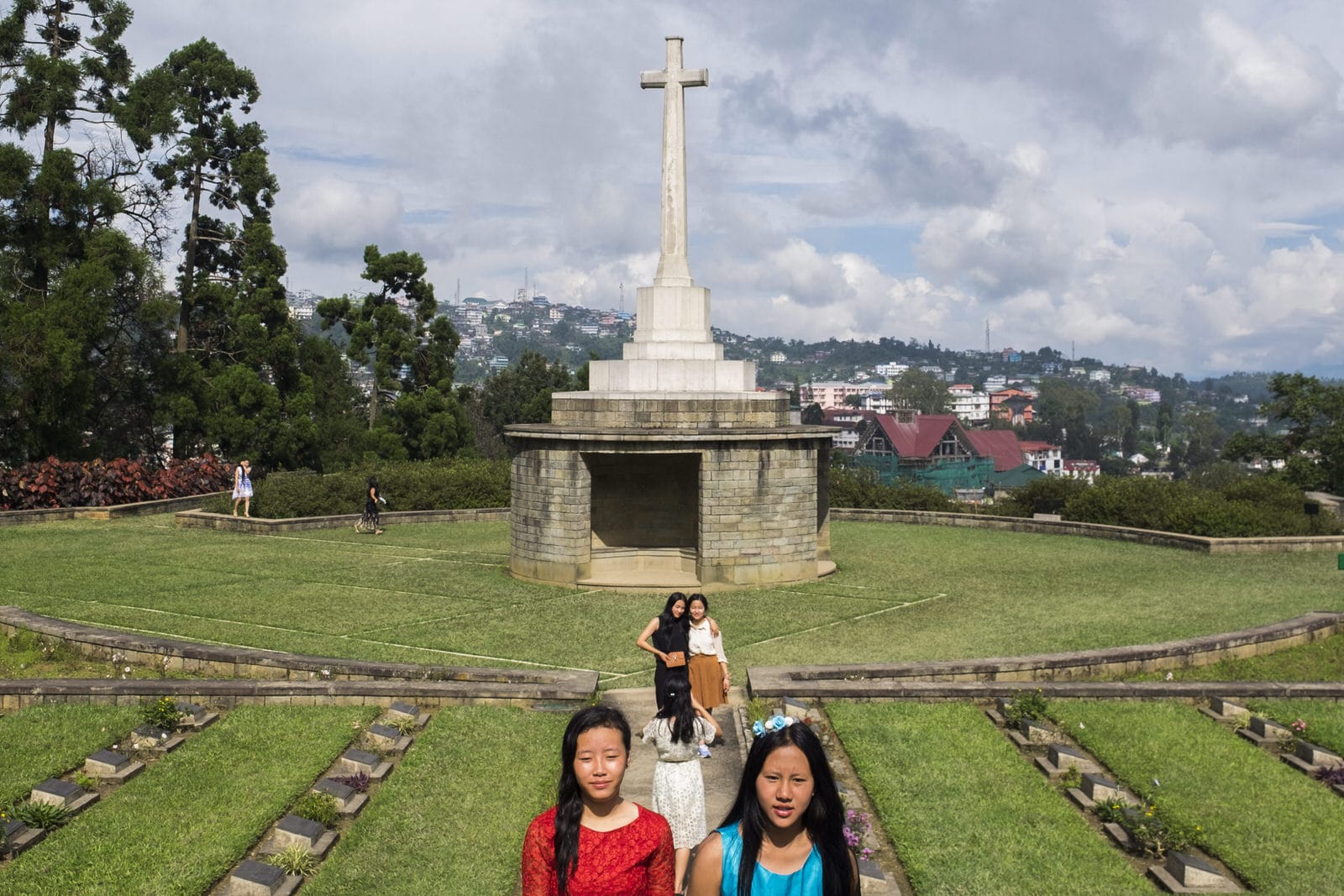
71 years and few months later, we stood on the same Garrison Hill, now a gleaming sheet of closely cropped grass, filled with neat rows of graves. Here lie the many men who gave their lives in one of the most decisive, yet least documented and recognised, battles of WWII. We saw graves of men as young as 16 and those from as far away as Australia; many were probably cooks, drivers and other support staff, keeping their officers combat ready at all times. The story of India in WWII, a country that provided the largest volunteer force in the world in someones else fight, is oft forgotten. Both by the players in the great war and by Indians themselves. WWII was fought in far away Europe and North Africa, in Singapore and Burma, in the United States and Japan, and yet in most of these places, from far flung Eritrea to Basra to the coast of Normandy, Indians fought and died, a few coming back with the prestigious Victoria Cross for bravery.
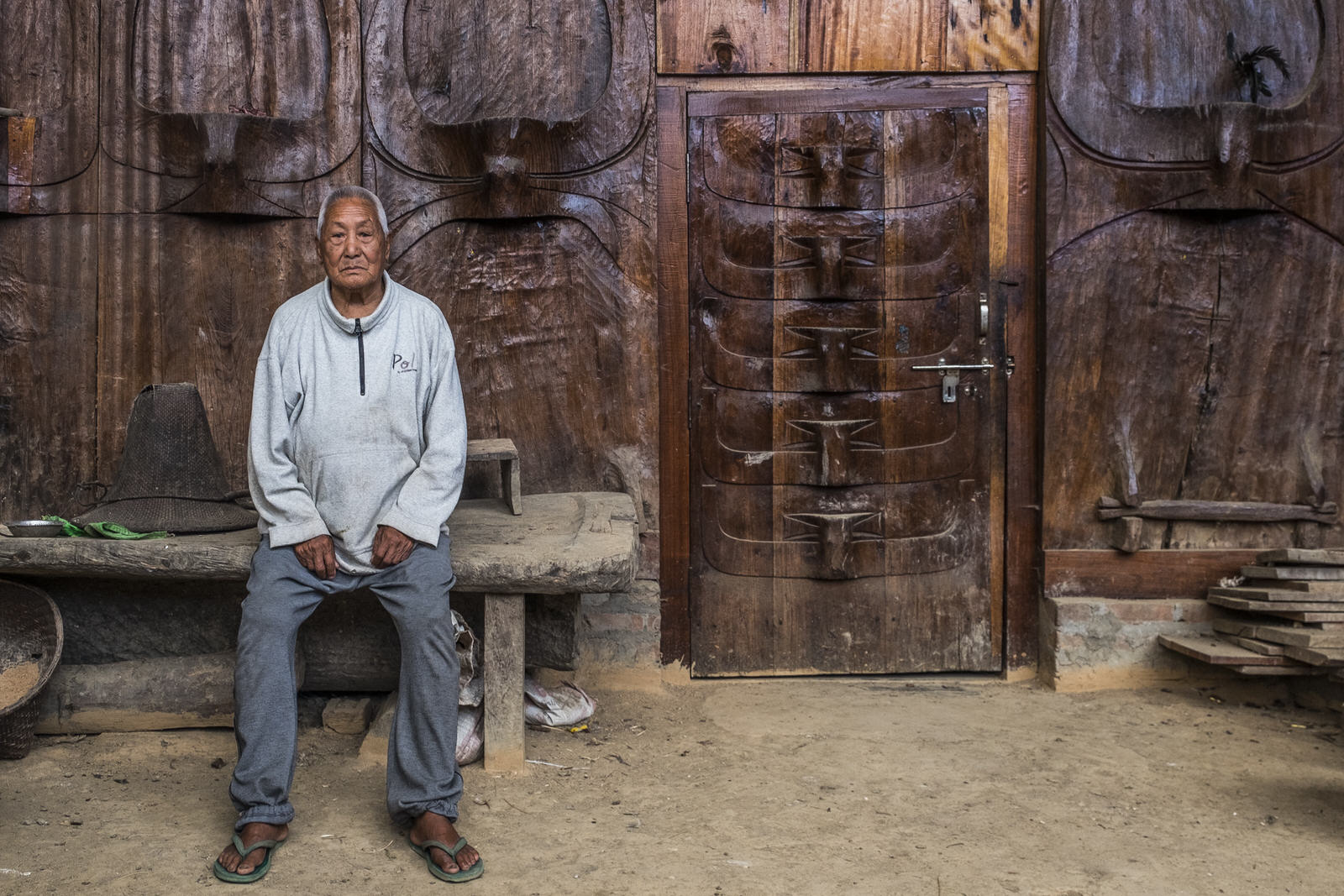
Deeply intertwined with the story of WWII is that of the Naga Hills. 50 kms away from Kohima, in a tiny village called Phusachodu, we met Thikhu Ruho. Hard of hearing, wrinkled and slow, he couldn’t quite remember his age, but the villagers guessed it to be above 90. He lived in a typical Chakhesang style house, with the crossed wooden beams on the top and meat drying over the fireplace. He was the oldest man in the village and has fought for the British Indian Army in Burma, in the first Assam regiment. He remembered fighting alongside men from Assam, Tripura and Manipur. They trained in Shillong, and were then sent to battle in Burma, though he couldn’t remember where. There were maybe 10 other men from his village, all Chakhesang Nagas like him, who were sent to train, but the others were sent to different parts of the region to fight. The stage of many battles, Burma has seen some of the worst atrocities of war committed by both sides. Mr Thikhu couldn’t remember much from the war, it was 70 years ago, a while before India received Independence. Perhaps he has chosen to forget that time in his life; and given the stories about the war in Burma, it seems understandable.
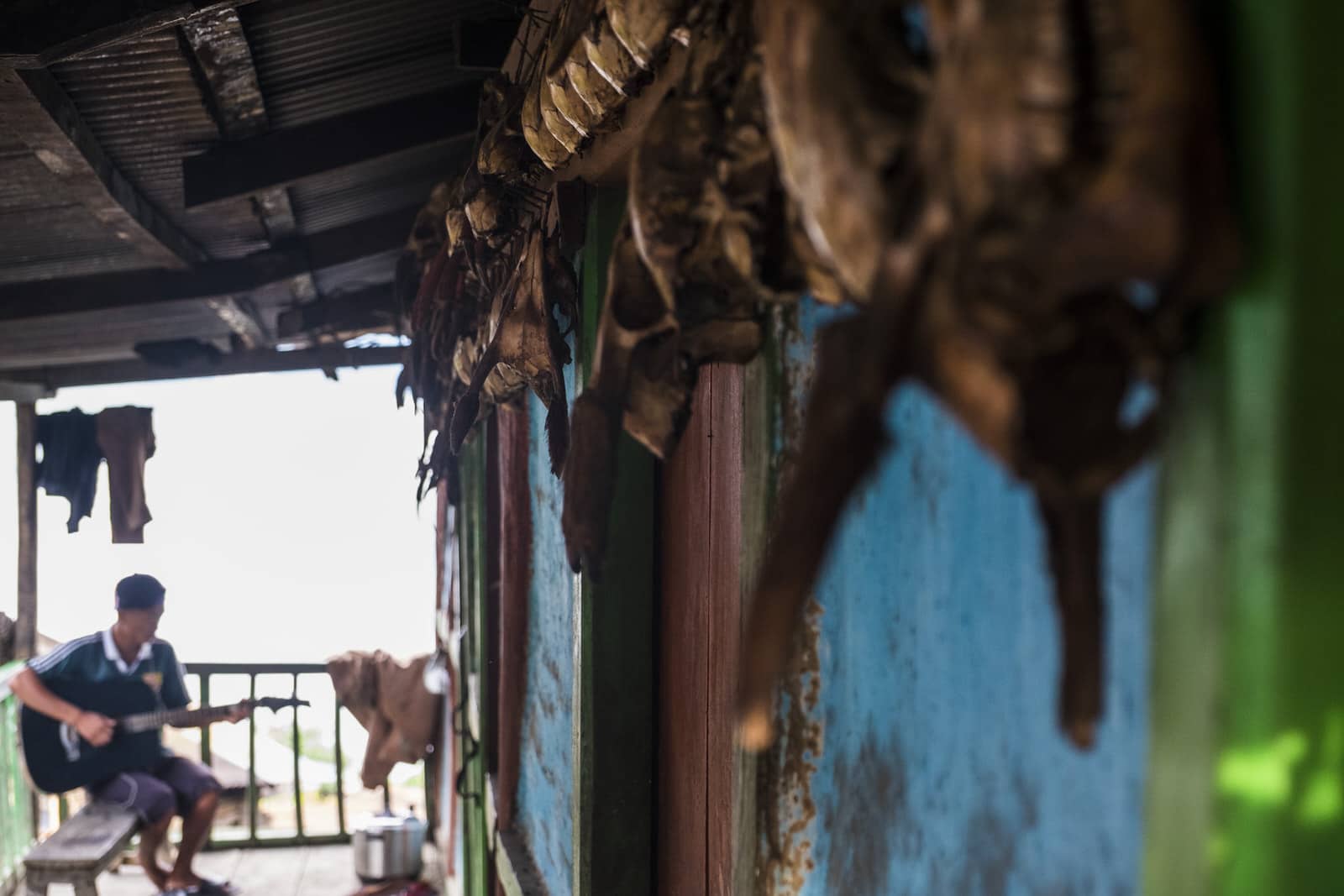
In April 1944, Chesezu Village was one of the many in this region to help the Japanese as they advanced towards the Kohima ridge. Bose, or the ‘King of Japan’ as they called him, came to the village to seek refuge and ask the villagers to aid his army, the National Indian Army and the Japanese Imperial Army. It is commonly known that Bose moved about the North East region of India, Burma, Singapore and other parts of the world drumming up support for his Army and the fight against the British. He made a pact with the Japanese, though the nature of this pact and the extent of his relationship with them remains highly contested and controversial, where he would fight alongside them in WWII in exchange for their support against the British.
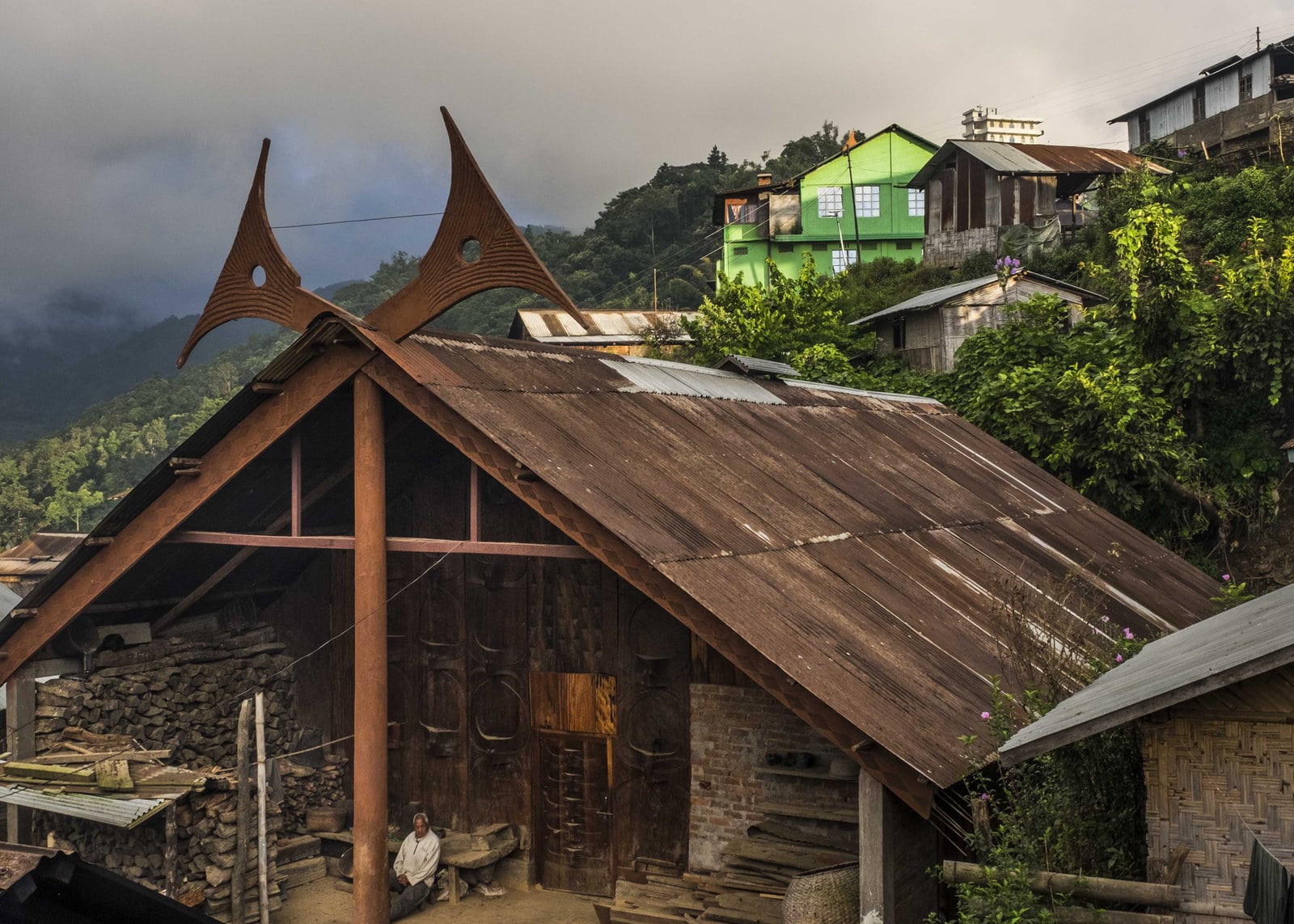
Mr Vezo Swuro, 88, places his army cap with a pin jauntily to one side of his head, straightens out his hunched shoulders and gives us a big smile. He is now ready to talk. The big smile shows us the many wrinkles on the face of this now retired school teacher, who was once a runner for Bose and his Japanese compatriots. ‘I never fought in the war, no one from our village did’, he tells us through an interpreter. We are sitting in the house of the village pastor, sipping Naga tea and listening to stories of Mr Swuro, whose memory is excellent. We had seen the large but slightly crude bust of Netaji as he is referred to now, sitting outside the village waiting to be unveiled and inaugurated. The statues has been placed in the same clearing where Bose was camping and Mr Swuro was one of the few people that knew of his hiding places.
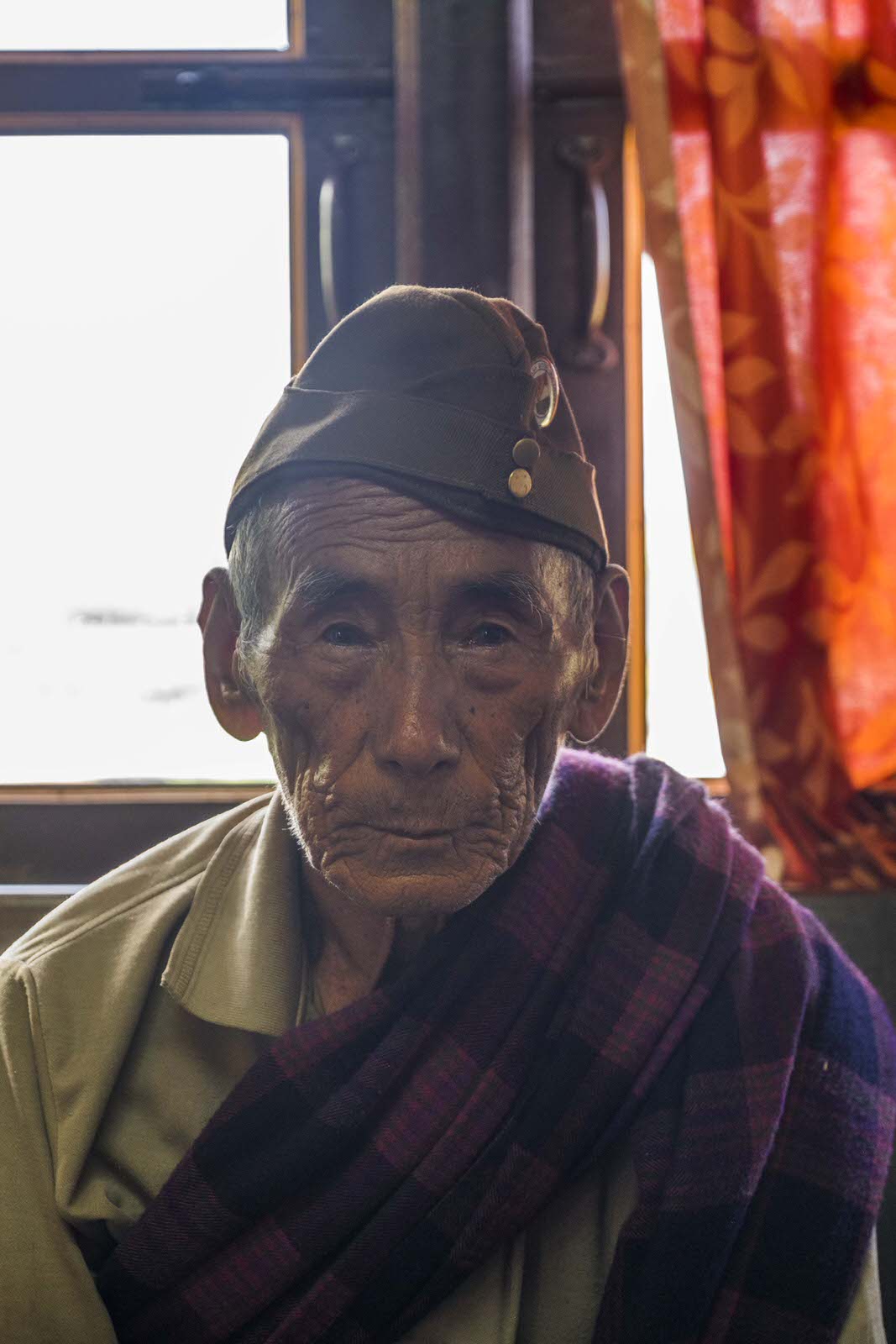
‘I would bring him whatever he wanted, chickens, fruit, messages from the Japanese.’ ‘We had a hard time communicating at first’, laughs Mr Swuro, his eyes full of memories of a time gone by. ‘Our language was full of hand gestures and noises,’ he says, suddenly breaking out into a clucking noise, startling the villagers gathered around. We all laugh and he is pleased at the reaction from the audience. At 16, Mr Swuro was probably an incredibly important runner, a job he stumbled upon, carrying messages between Bose and the Japanese. The village all gathered together to help Bose and the Japanese in 1943-44, when the Japanese Imperial Army was aided considerably by the Naga tribes. There are many reasons as to why this happened, and some accounts state that it was because they felt a greater kinship to the Japanese men who looked similar than to the white man and brown man from the plains. ‘I helped them and asked other villagers to help them because of Netaji, he was nice.’
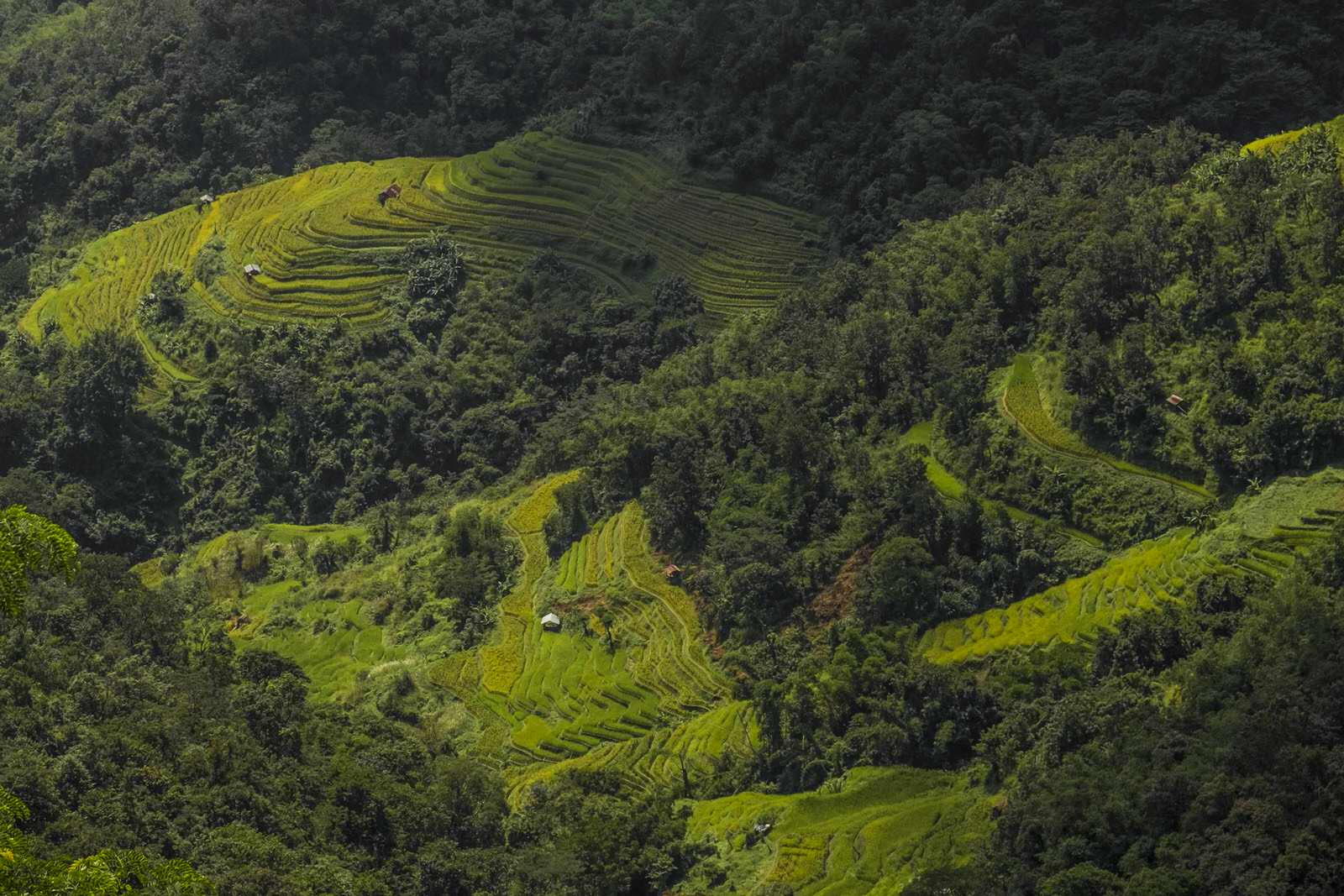
As a school teacher Mr Swuro finally learnt of the realities of the war, but it has not changed his opinion of Bose, who is seen as a revolutionary here and in many other parts of India. If government funds come through and the slow bureaucracy finally moves, Chesezu will be home to a massive Subhash Chandra Bose statue, memorial hall and library. Local villagers, members of the committee in charge of this are hopeful that 2017 will be the year for it. In the meantime they distribute literature and a CD of his life and teachings, and are happy to engage with the few curious like us who find their way to these villages.
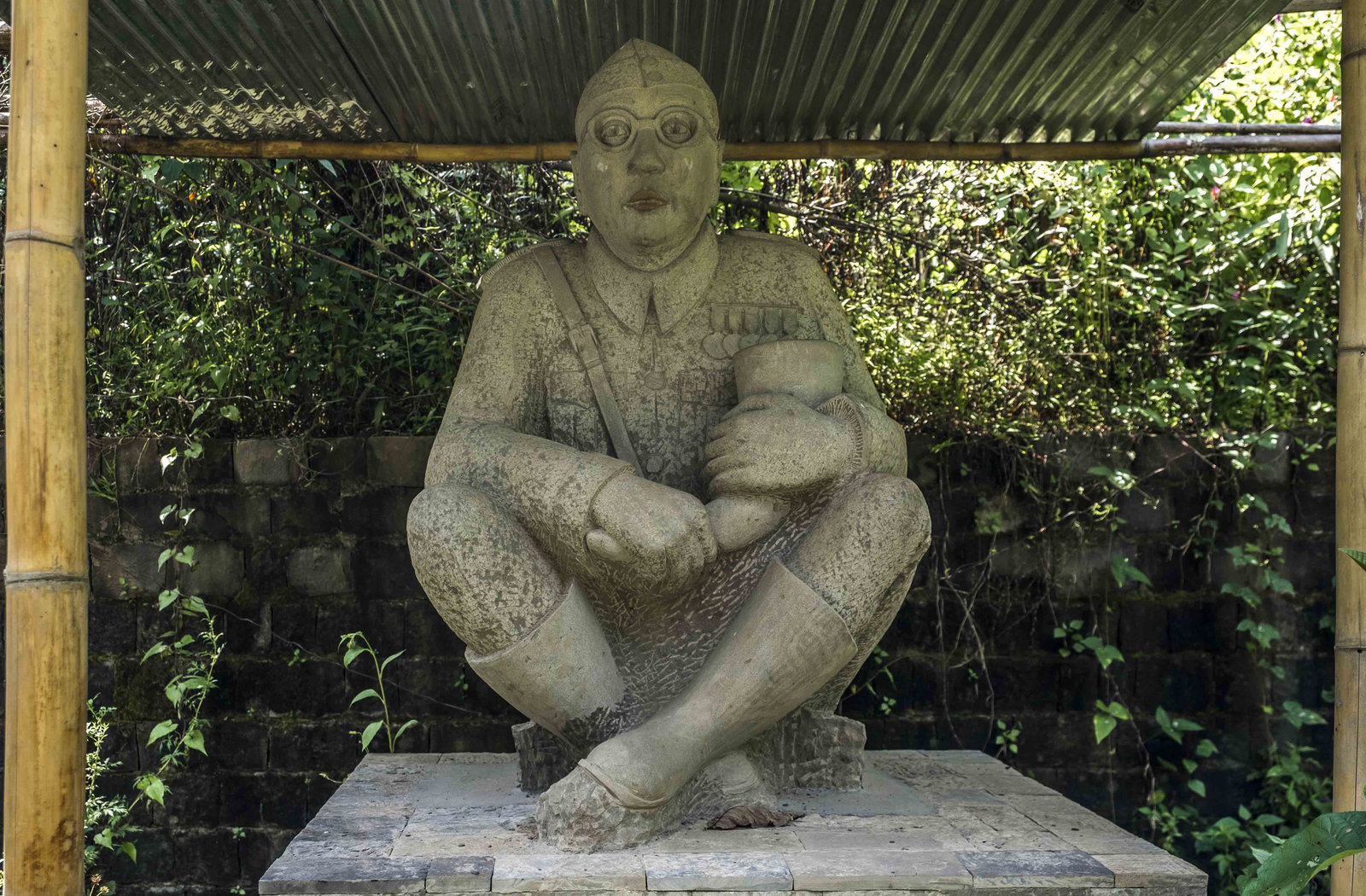
A three day journey from Phusachodu is the district of Mokokchung, home to the Ao tribe, the first region of Nagaland to convert to Christianity. The Ao’s, different in many ways from the Chakesang and Angami tribes of the south, apparently make the best Anishi, a curry made from smoked and fermented yam leaves. We travelled a couple of hours outside the main town to a tiny village called Longmisan to meet two WWII veterans. With clean narrow lanes filled with trees and flowers, surrounded by lows hills, Longmisan is a pretty little village. It also boast one of the largest log drums in the region, as our guide told us, though this is a common boast in villages. Surrounded by the verdant beauty, so typical of Nagaland, we sat in the modest home of Mr Supa Sangyu, and heard his stories of the great war. He proudly showed us the one precious picture he had of himself from the old days, dressed up as a soldier ready for battle. On his wife’s urging he went in and came out dressed in his best jacket which had three medals sewn on the front. A member of the 2nd Assam Regiment, he joined the war in 1944 and after a brief training in Shillong was sent to fight in Rangoon.
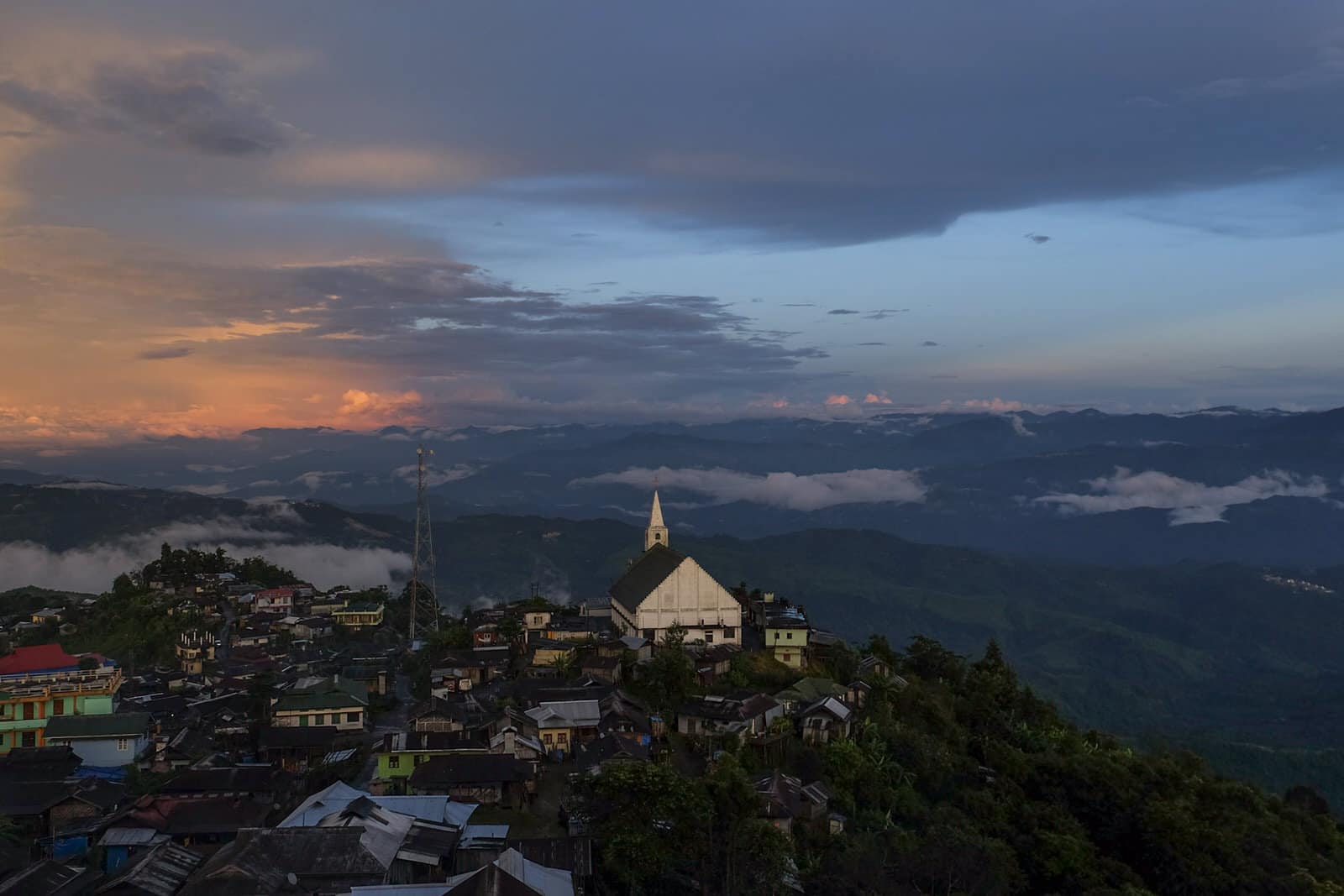
“There were 7 of us from the village,” he remembers, “5 are now dead.” He knows his neighbour Mr Onan Sang, though he can’t remember if they fought with each other. At 94, his memory seems good, and he recounts the sight of war, the fighting they experienced and the many hardships. “I shot people, 7 of them, it was a difficult time.” As with the others we had met, we were curious as to why these Nagas, in their remote villages, chose to join a war that belonged to someone else.
“We were recruited by the British. They came and asked us to fight, to help them, and so we did. I met many people there, but I don’t know where they have gone. Only 2 of us came back to Longmisan.”
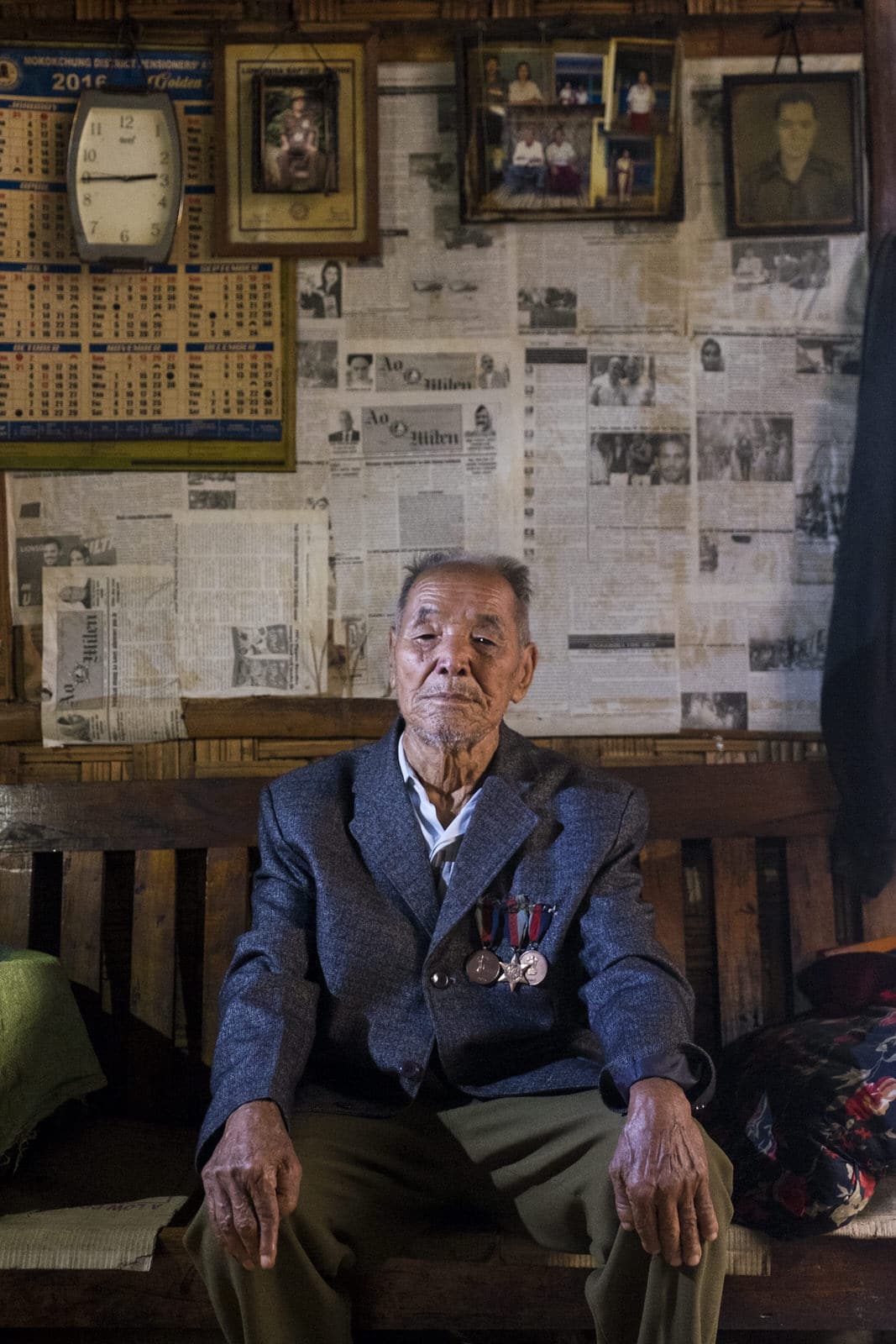
There are many accounts of the friendly and hospitable Nagas aiding the British efforts in their war against the Japanese, especially in the northern region. Due to reconciliation efforts by organisations in both the UK and Japan and efforts by the Commonwealth War Graves Commission, more accounts of the Nagas’ heroism is emerging and being documented. Stories tell us that many aided the British because of atrocities committed against them by the Japanese soldiers when their supply lines were cut off, yet others helped the British army simply because they saw it as their duty to help, acting as guides, porters, spies and cooks. It is also understood that many of the villagers helped the British due to the good relationship that had already been established by local government representatives or the Church. While efforts are underway, greater research is required to truly understand the extent of the role the Naga tribes played in the war, fought between two faraway Empires vying for greater control.

“I remember one particular battle, I thought I would die. I was surrounded by the Japanese but managed to survive. I am sure I killed many”, says Mr Sang, recounting a particularly difficult moment in Maymyo, near the Irrawaddy. (Maymyo is now referred to as Pyin Oo Lwin). Also a member of the 2nd Assam Regiment, Mr Sang was sent to Mandalay first, the Army HQ, and then to several places along the Irrawaddy River. His face takes on a pall of sadness as he plays out history in his mind and his wife begins talking about other things, as if to bring him back to the present. While words are lost in translation, the sentiment is apparent, of a time we can’t even begin to comprehend. We move on to discussing politics in Nagaland, tell them about our travels across the state and how different places are now 70 years later.

Controlled by men sitting in a few capital cities, WWII was fought all over the world and affected everyone from cities in Europe to villages across Asia. Yet the story of the Nagas in the war is seldom told, of the hundreds of men, women and children who were instrumental in the victory of the allied forces. “There are 2 Dakota planes in the jungle”, chuckles Mr Sangyu, “you go find them, it is like treasure.” We know of these planes, they have already been discovered by American groups. Talking to him was the treasure we were after, but it is difficult to translate this and we move onto more pleasant topics.
A version of this story first appeared in the June issue of Discover India’s North East Magazine.